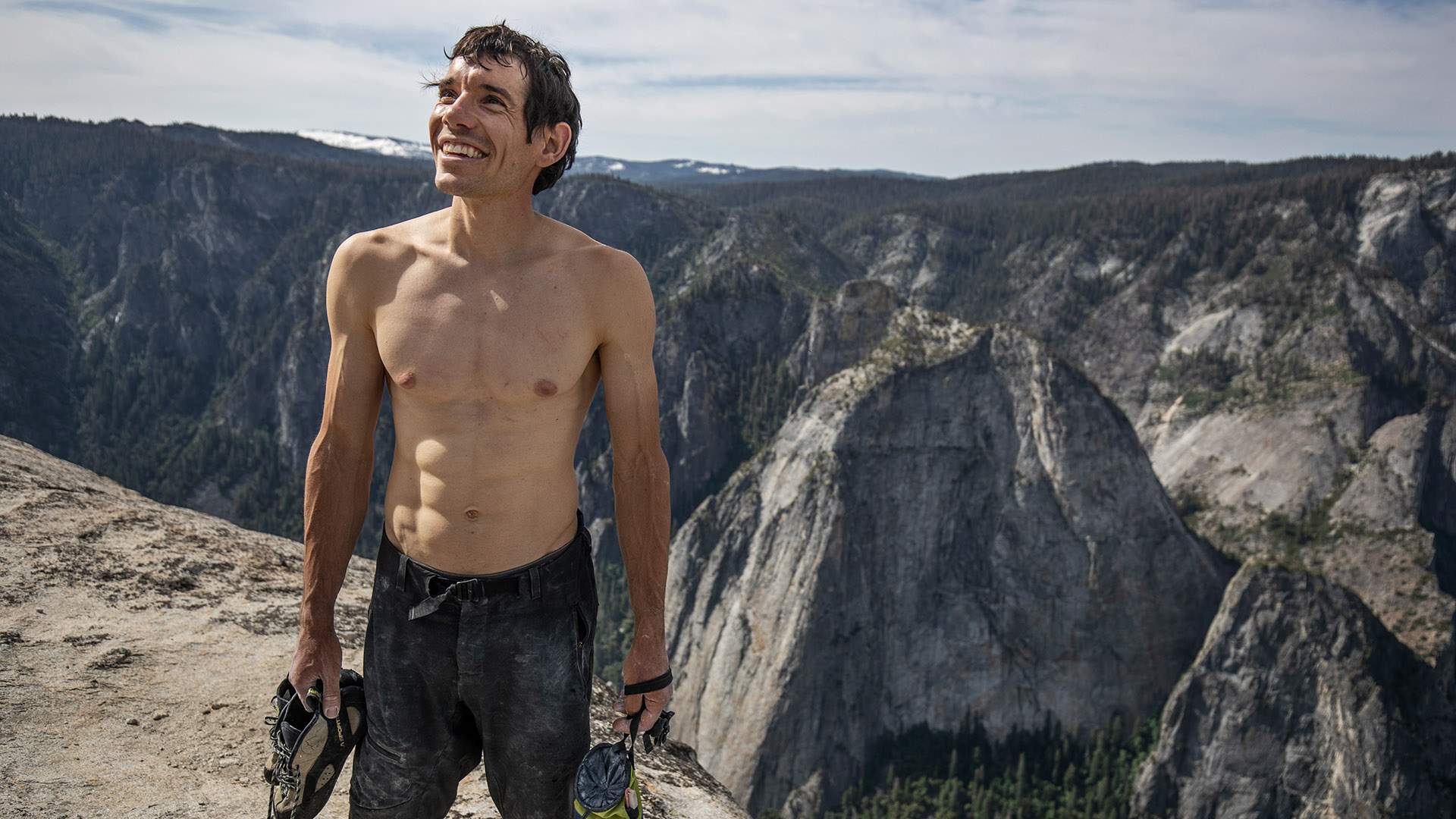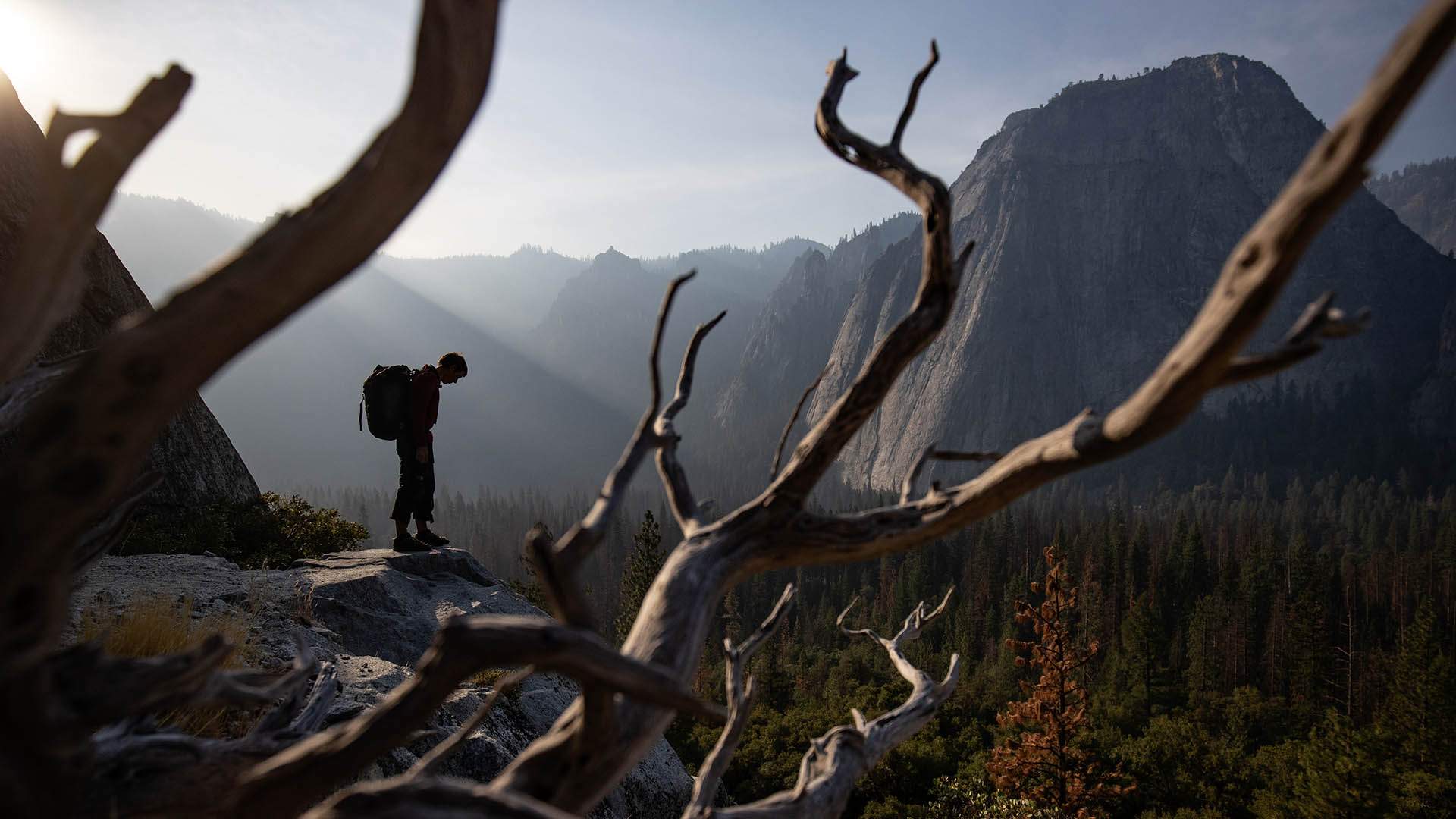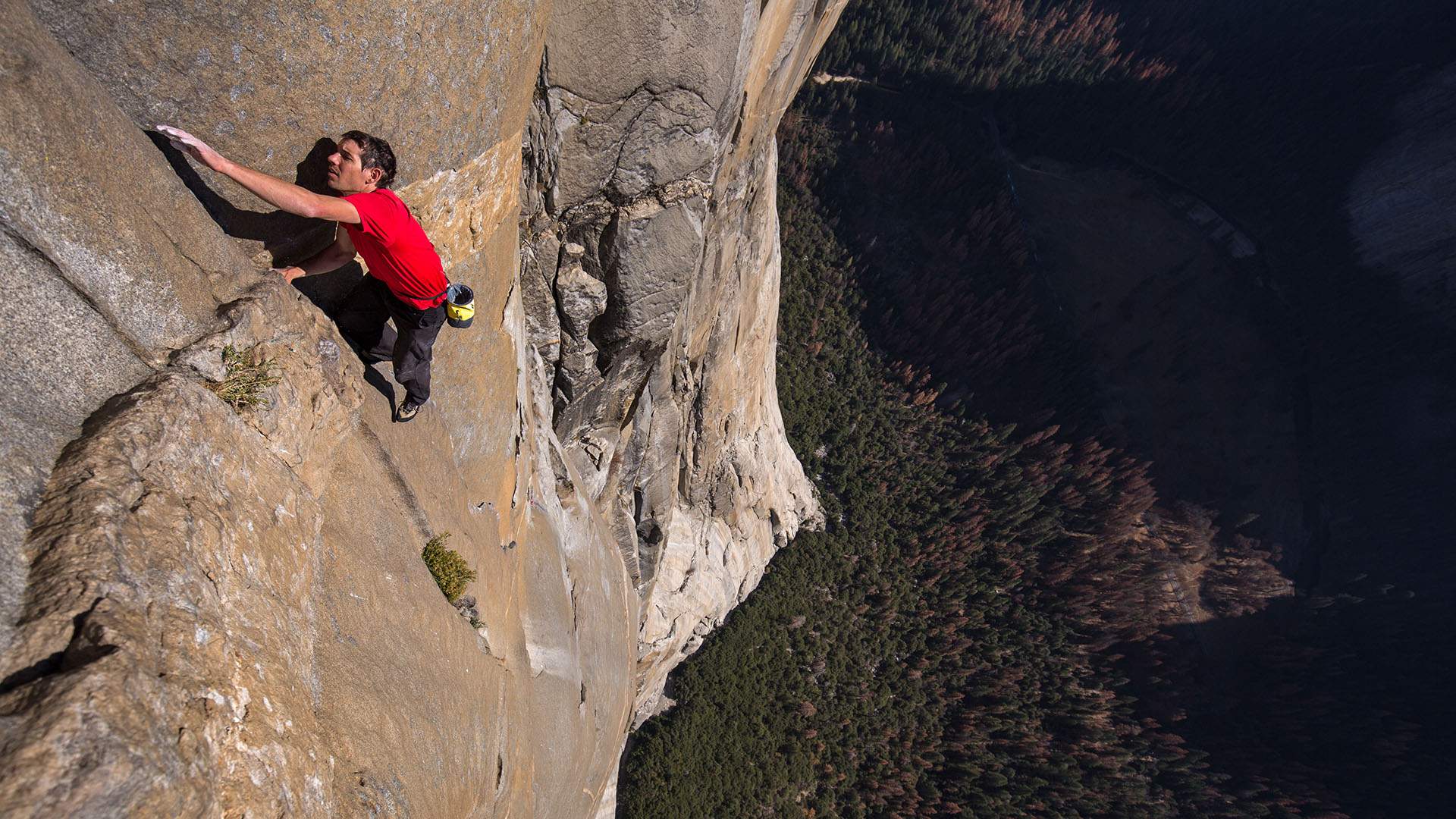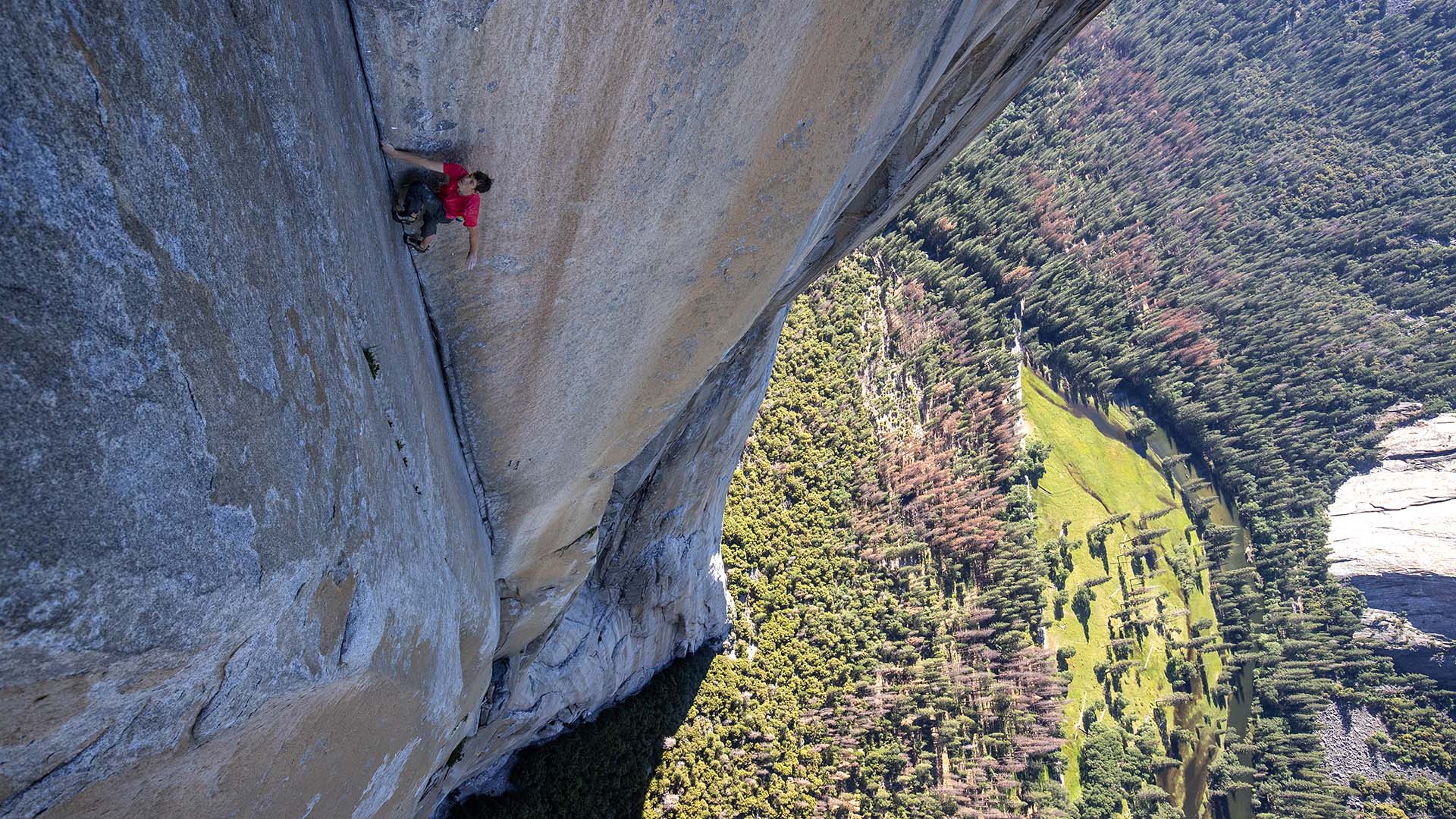How Alex Honnold Climbed Yosemite's Epic El Capitan without Ropes — and on Camera
Oscar-nominated documentary 'Free Solo' follows the climber as he scales the 900-metre rock face without ropes or apparent fear.
When Alex Honnold scales a nearly kilometre-high cliff, it's with a look of fierce determination blazing in his eyes. When the professional climber discusses the extraordinary feat documented in Free Solo, the same no-nonsense vibe filters through his voice. He's never sombre — just direct. Ask him how it feels to venture to such great heights, and his response is "pretty good". Ask him about the possibility that his death could've been caught on camera, and he says he "basically didn't really care".
As newly Oscar-nominated documentary Free Solo chronicles, Honnold made history while scampering up Yosemite's National Park's famous El Capitan rock formation. Plenty of climbers have propelled themselves up the granite monolith's 900-metre vertical expanse, but only Honnold has successfully done so without ropes. The practice is called free climbing. When it's done alone, it's called free soloing. Made plain in the title of Elizabeth Chai Vasarhelyi and Jimmy Chin's film, Honnold's record-breaking quest to the top was completed by himself without any supportive or protective equipment.
Unsurprisingly, it's a feat that has garnered significant attention — but reading news articles and seeing photographs really doesn't do it justice. Honnold notes that "the film doesn't quite do justice to the real scale of it" either, but watching Free Solo is as close as the rest of the world will get — and for many, as close as they'll ever want to get — to stepping into his climbing boots. Assisted by their filmmaking team, Vasarhelyi and Chin assemble an astonishing array of footage, with their connection to climbing evident in every frame. A real-life couple, they both directed acclaimed climbing documentary Meru, while Chin is also a professional climber in his own right.
Of course, as exceptional as Free Solo's footage is — and as skilled as making viewers feel like they're making the nerve-racking climb with its subject, too — there would be no film without Honnold. He describes scaling El Cap as "an Olympic gold medal-level athletic achievement... and if you don't get that gold medal, you're going to die", in case the whole situation didn't already sound difficult and dangerous enough.
Fresh from garnering considerable applause on the international film circuit, an array of accolades from critics groups and now an Academy Award nomination, Free Solo has arrived in Australian cinemas to share its thrills with eager cinema-goers. We spoke to Honnold about the motivation behind his love of climbing, his preparation process and the difficulties of opening his life up to the camera.


National Geographic/Jimmy Chin
THE BIG QUESTION: WHY FREE SOLO?
There's an enormous question at the heart of Honnold's climb — one that he recognises himself and that he can't completely answer. When asked what it is about free soloing that appeals to him, he replies: "I don't know, it's just a challenge that I seek out". That might sound like a blasé approach to a dangerous field where many experienced figures have died doing what they loved, but Honnold is anything but. In the film, he's meticulous about his work, documenting his progress in climbing journals, memorising complex moves and even living in his van so that he can remain as close as possible to El Cap.
"It's just a more demanding style of climbing," he explains. "It requires more from you, so I feel that it gives a little bit more back in return." While Honnold also mentions finding personal limits and trying his hardest — "it's something I feel like I can do, and I feel a certain obligation to do the hard things that I'm capable of" — what truly shines through is how much he enjoys climbing. "I think it has always been the most fun part of my life," he reflects. "It's funny, because I think the really difficult parts of my life are doing the film tour and travelling and just doing appearances as a professional climber, and doing events — you know, working, things like that."
That said, Honnold is also quick to stress the difference between climbing in general and free soloing. "Free soloing is pretty rewarding, but it is very difficult and challenging. If I could only choose one style of climbing for the rest of my life, it wouldn't be free soloing."


National Geographic/Jimmy Chin
GETTING RID OF THE ROPES
"Part of it is intense, but then part of it is amazing. A lot of it just has to do with which part of the route you're on." That's Honnold's assessment of climbing in general — so what made him decide to free solo El Cap, the route that was "always the last one [on his list] that was aspirational"? Initially, he thought it was too frightening, but that's where planning and training came in. It might seem incredulous to the watching audience, but "two years' preparation made something very scary feel relatively comfortable by the end," he notes.
Given the life-and-death stakes at play, Honnold's training — which included two years of practice and climbing El Cap with a rope eight times — prepared him to take the leap. "There was no pressure to actually do the climb, so if I had never felt prepared for it — had I never felt comfortable — then I just wouldn't have done it".
Of course, he wasn't just hopping to survive the climb, but to enjoy it. "Part of what was so satisfying about it was that I had exactly the experience that I was hoping for. Through the course of making the film, I spent so much time up there working on it, that when I finally did it, it felt great."


HOW THE CAMERAS CHANGED THE CLIMB
Honnold recognises that watching free soloing is hard. "I don't like to watch my friends free solo. Nobody really likes to watch free soloing — because, as you see here, and as audiences experience, it's just uncomfortable to watch somebody in that kind of position." It should come so no surprise, then, that the impact of the cameras on Honnold's climb — and the impact of his mammoth endeavour upon Vasarhelyi, Chin and their team — is as much a part of Free Solo as the eventual feat itself.
Indeed, the documentary doesn't shy away from the emotional toll on those recording Honnold's every move, or the planning that went into ensuring that the filming process didn't take a toll on Honnold. "The crew did a remarkable job of insulating me from any of those [negative] feelings and just staying neutral throughout it all," says Honnold, noting that the cameras didn't feel like they changed his experience "at all".
That said, if something had gone awry, Honnold wasn't worried for himself, or about the fact that his literal downfall would be caught on camera. "To me, if something went wrong — if I fell off and I died — I don't really care what happens to the footage after that because I'm dead," he says. Instead, his concerns lay with traumatising the camera crew, who are also his climbing pals.
Honnold doesn't just expose the most dangerous moments of his life to Free Solo, however. The film also dives deep into his personal life, including his relationship with new girlfriend Sanni McCandless, which becomes strained as her worry for his safety and their life together is largely ignored as Honnold zeros in on his goal. As someone who'd clearly rather get on with the business of climbing, rather than talk about it, it's the more intimate side of his daily existence that proved the hardest part to share — and to watch later. "I cringed my way through that. I normally pull my hood really deep and cover my eyes. It's hard to watch. And a lot of it is hard to watch because I'm just not a great boyfriend and I'm not a great partner to Sanni."

Free Solo is now screening in Australian cinemas. Read our full review.
Images: Madman / National Geographic / Jimmy Chin.





